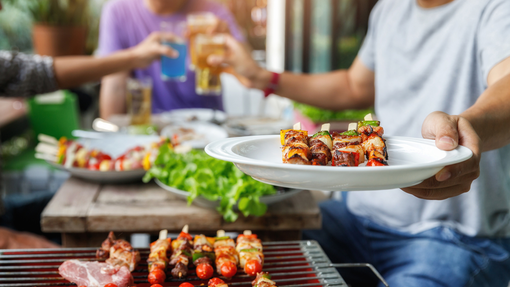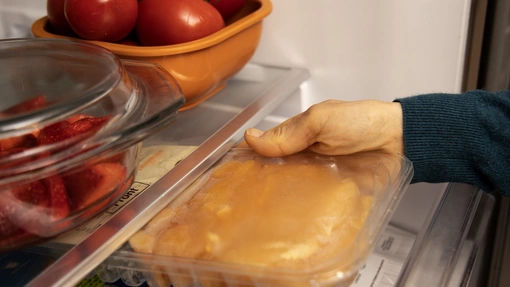
The ultimate guide to Christmas food planning
The ultimate guide to Christmas food planning
From going overboard with the mince pies to buying lots of different desserts for the people who don’t like Christmas pudding, it’s all too easy to buy too much at Christmas. That’s down to a few factors:
We want to indulge at Christmas and treat our guests, which means it’s harder than usual to judge how much food to buy per person
We’re often worried that we’ll run out of certain foods and be unable to get more at the last minute, with shops running out or closing for the Christmas period – so we buy more “just in case”
Other people are doing it, so we feel we have to as well – peer pressure can be powerful, especially with the abundant spreads of food we always see in the media this time of year
The result is that it’s easy to end up with far more food than you really need. Research by Which? shows that the festive foods people most often buy too much of are cheese, biscuits, chocolate, alcohol and vegetables. But don’t worry – if that sounds familiar, a bit of planning is key to making sure you avoid falling into the same trap! Here’s how to take control of your Christmas food spending.
1. Christmas meal planning
We’re used to planning our presents, so give your meals the same treatment! To get started with your Christmas meal planning, you’ll need to know:
How many guests you’ll have
Which meals they’ll be joining you for
Their ages – a 5-year-old will eat less than a perpetually hungry teenager or fully grown adult!
Their dietary preferences and allergies – the more you can serve that caters for all dietary needs, the less you’ll have going to waste
You should now be able to start mapping out what you’ll serve for each meal over the Christmas period. Don’t forget that some of the time it might be just your normal household, so plan those meals as well as the ones where you’ll be entertaining. As you start to plan, check your cupboards, fridge and freezer to see whether there’s anything you’ve already got that you can work into your meal plan.
Don’t forget to factor in leftovers – such as turkey – and plan for foods you can serve them with, such as jacket spuds and salad. When you’re thinking about how to accommodate particular dietary needs, remember that it can be difficult to provide several different meals without having surplus food. So, choose dishes that can be enjoyed as leftovers or that non-vegetarians are just as likely to enjoy, such as vegetables that everyone will dig into.
You could also consider planning in some batch cooking of dishes you can easily scale up (such as curry or chilli) that can be enjoyed for more than one meal to make the most of bigger, more cost-effective ingredients. Batch cooking also means you’ll spend less time in the kitchen overall!
2. Use a portion planner
Next, it’s time to work out how much food you’re actually going to need. Our food portion calculator is a great place to start if you’re not sure how to do this – it will tell you how much you’ll need for each food type, in grams as well as other ways of measuring, such as slices or handfuls.
BBC Good Food also has a handy Christmas-specific portion planner to help you plan your main Christmas dinner, including the all-important question of how much turkey you’ll need per person (hint: you may not need a whole bird!).
3. Write your shopping list
With the help of your meal plan and portion planner, you’re now ready to write a Christmas food shopping list. It may sound obvious, but writing a shopping list based on what you actually need and sticking to it is a great way to stay disciplined when you’re in the supermarket and continually faced with tempting festive treats! Read more about writing a shopping list that works for you.
4. Share the shopping – and the leftovers!
If you’ve got guests coming for Christmas, why not agree to share the shopping so that you don’t shoulder the whole burden? There’s no harm in asking guests to bring something along – whether it’s a starter, dessert or nibbles – and you could even set each person or family the challenge of acquiring particular items, such as “0.5kg of carrots” or “1 x pack of oak smoked ham (10 slices)”. Any leftovers can then be similarly divided up afterwards so that nothing goes to waste.
5. Quality over quantity
A good motto to bear in mind to avoid festive food waste is ‘quality over quantity’. In other words, rather than buying lots of food, buy less but buy better. For example, if you’re not feeding a huge crowd then there’s no need to go for a whole turkey – you could opt instead for a turkey crown. Similarly, a small free range organic turkey is better than a huge cheaper one.
The same applies to all the extras we enjoy over Christmas. Resist the temptation to buy an enormous value family pack of biscuits if you’re unlikely to get through them all; instead, buy a smaller pack of nicer luxury ones. Similarly, a couple of quality individual cheeses may well be more enjoyable and cheaper than a pre-assembled cheese board - especially if there’s one nobody really likes …
Finally, don’t feel obliged to stick to particular culinary traditions. If you don’t like turkey and always end up with too much of it (because turkeys are big birds!), why not roast a chicken, or something else you’ll definitely enjoy and use all of? See also sprouts, Christmas pudding, parsnips…
Of course, if you do end up buying too much, there are plenty of ways to use up festive foods and make your Christmas food shop go further. Stay tuned for a post full of Christmas leftover inspiration!











